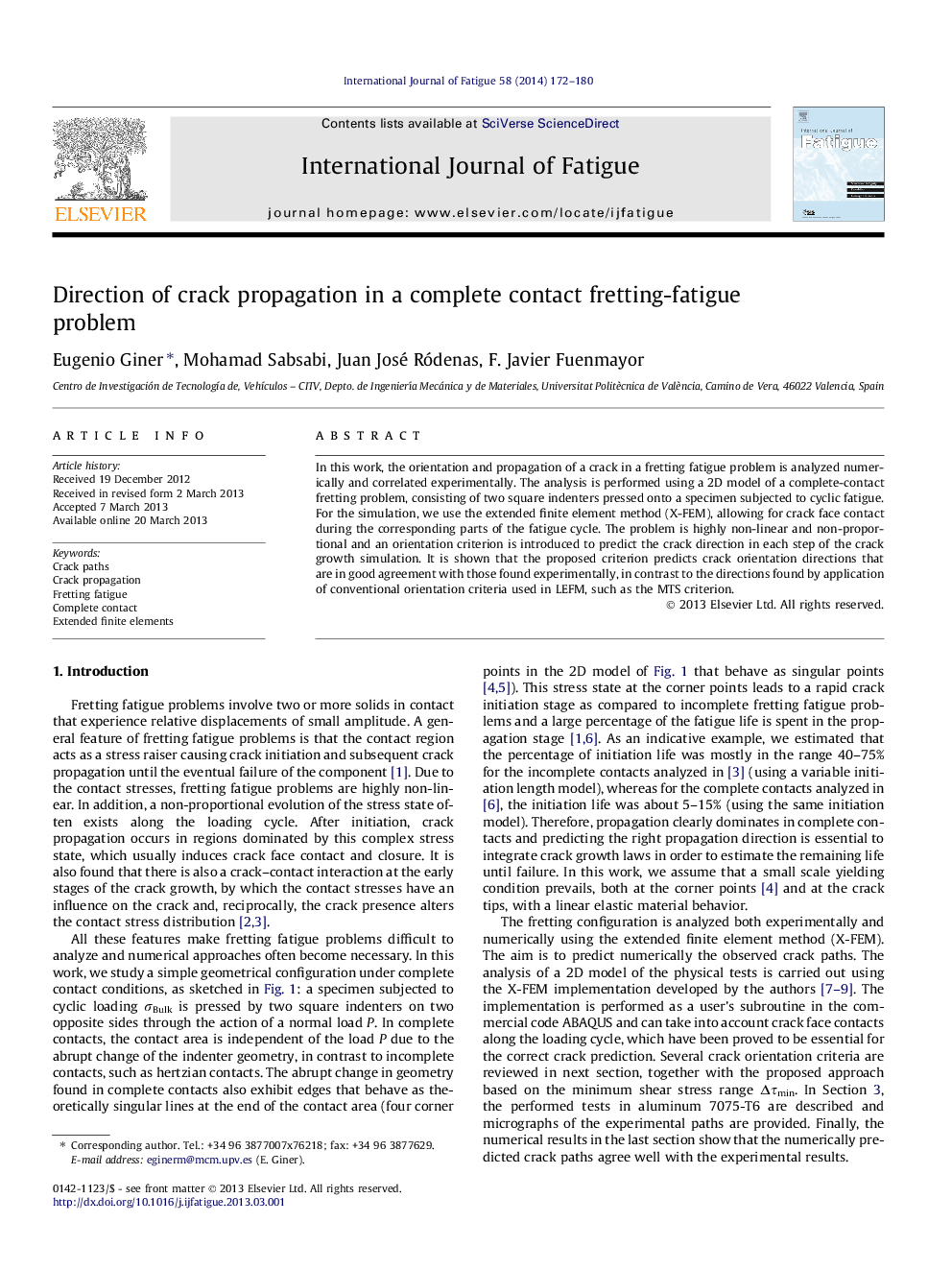| Article ID | Journal | Published Year | Pages | File Type |
|---|---|---|---|---|
| 780789 | International Journal of Fatigue | 2014 | 9 Pages |
•Fretting fatigue crack paths are predicted numerically using X-FEM.•An orientation criterion based on the minimum shear stress range is proposed.•Crack face contact and non-proportional evolution of stresses are considered.•The predicted crack paths agree well with those observed experimentally.
In this work, the orientation and propagation of a crack in a fretting fatigue problem is analyzed numerically and correlated experimentally. The analysis is performed using a 2D model of a complete-contact fretting problem, consisting of two square indenters pressed onto a specimen subjected to cyclic fatigue. For the simulation, we use the extended finite element method (X-FEM), allowing for crack face contact during the corresponding parts of the fatigue cycle. The problem is highly non-linear and non-proportional and an orientation criterion is introduced to predict the crack direction in each step of the crack growth simulation. It is shown that the proposed criterion predicts crack orientation directions that are in good agreement with those found experimentally, in contrast to the directions found by application of conventional orientation criteria used in LEFM, such as the MTS criterion.
